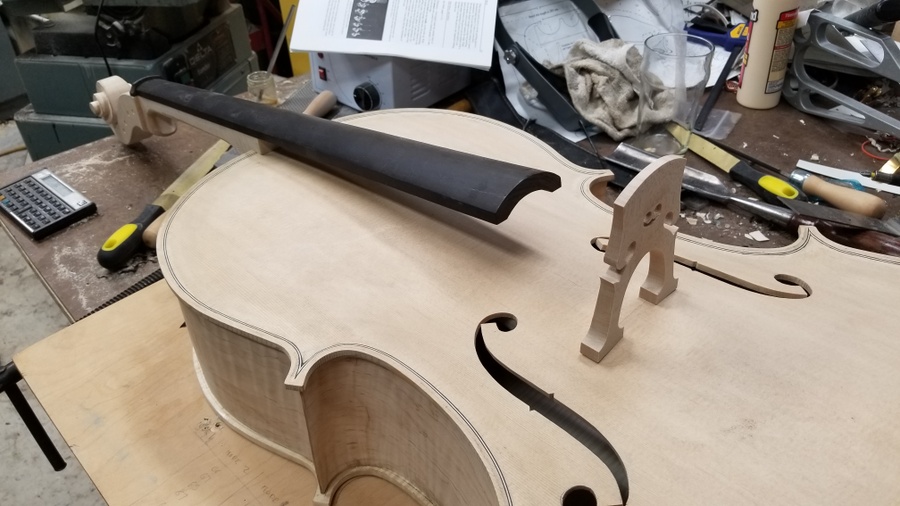I've been delinquent in keeping up with my progress, so it's catch up time.
The carving on the scroll is complete and it just needs to be finish scraped. The entire instrument will require that, so when all of the construction is done, I'll scrape everything just before varnish to keep it clean.
The dyes arrived for the varnish, so it's about time to cook. I plan on using the recipe provided by David Ireland on YouTube to make it. I want a deep burgundy color, so the plan is to stain it all light brown after the sealing (ground) is applied, to make it all an even color, and then put a coat of red and a coat of blue varnish over it. Since the layers are transparent, the brown should show through the red and blue layers, resulting in a burgundy color. Or I may just use one coat of purple varnish to keep the thickness to a minimum. Of course it will all be proven on scrap before anything touched the cello. I also plan on blackening all of the chamfers, and the inside edges of the sound holes and that will go on under the final layer of clear.

The backside of the volute was a challenge because the carving covered a large area and it was difficult to keep it all the same depth. The trick was to make multiple small passes and then clean out the remaining wood that was left.


I made a tradition pencil sharpener type peg shaver, but couldn't get the thing to cut cleanly. Having never seen one up close, I was likely missing a key design feature. After beating on it for way to long, I eventually tossed it in the trash can and made a fixture to hold the pegs in the lathe and used the taper attachment to turn the tapered section to size. I was able to match the taper reamer pretty darned close and it made for a nice tight fit.

There is a lot of conflicting information out there on the shape of the fingerboard, so I just gave it my best shot. After stringing the cello and setting the string heights, it looks like I got close, but may want to pick up another fingerboard and try it again. They were so cheap, I knew I should have bought a couple.

The nut was well oversize and required final shaping after being mounted. The string height at this end is about 1/3 the diameter of the strings. There are small grooves in it to guide the strings toward the appropriate tuning peg.
I strung the cello up tonight for the first time and it was rewarding to hear it make sound. It's been about 48 years since I last played one, so it wasn't great sound, but hopefully that will improve.

Tom






























